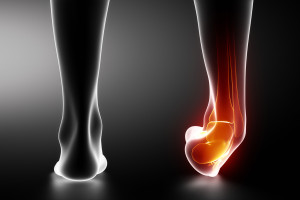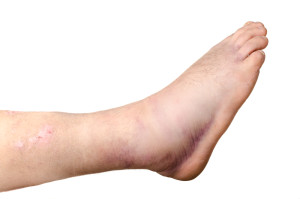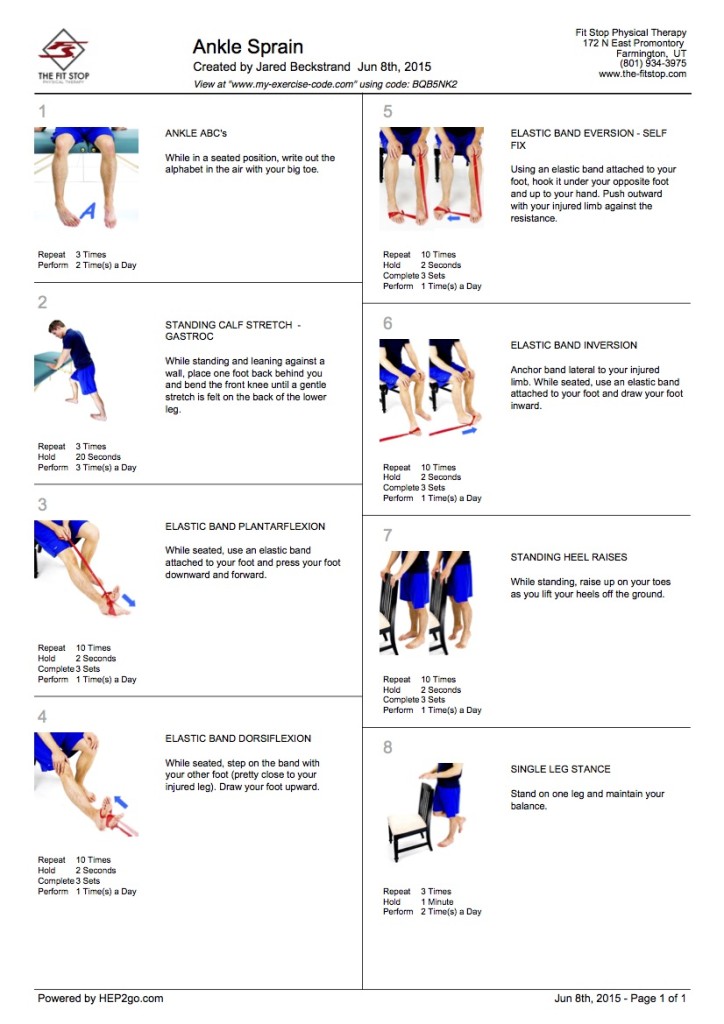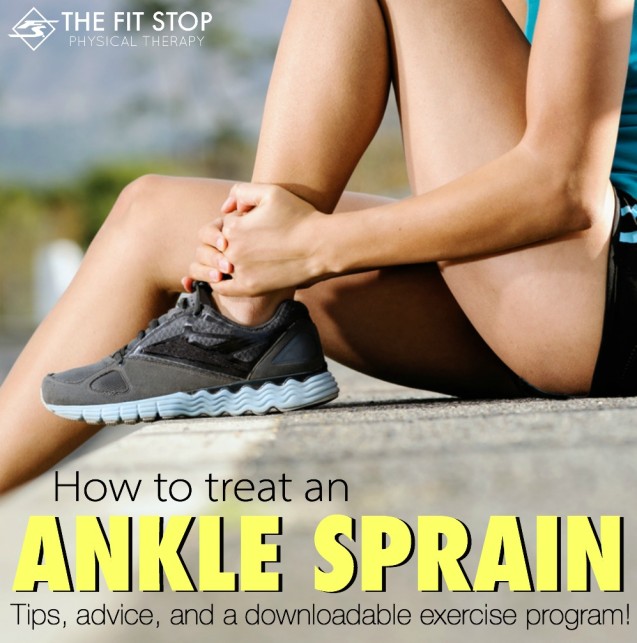How to treat an ankle sprain – Best home exercises
So, you’ve sprained your ankle? First of all, my condolences… I at least hope it happened doing something fun rather than a stroll off a curb that ended a little too quickly. But there you are barely hobbling around, pinned between the choice of playing it cool like nothing happened, or basking in the pity party that’s coming your way as you writhe in pain (you’d better believe that I’ve done both)! But the question is – what do you do now? What are the best steps to take after you sprain your ankle to help you heal better and recover faster? Keep reading to learn more…
 The most common ankle sprains occur via ankle inversion, when your foot rolls to the inside and the top of your foot rolls towards the outside. This pulls on multiple ligaments, but especially on the anterior talofibular ligament, or “ATFL.” The ATFL runs across the top, outer edge of your ankle connecting some important bones. With any luck, you haven’t completely torn it, but you’ve essentially stretched that ligament more than it likes and it’s screaming back in protest!
The most common ankle sprains occur via ankle inversion, when your foot rolls to the inside and the top of your foot rolls towards the outside. This pulls on multiple ligaments, but especially on the anterior talofibular ligament, or “ATFL.” The ATFL runs across the top, outer edge of your ankle connecting some important bones. With any luck, you haven’t completely torn it, but you’ve essentially stretched that ligament more than it likes and it’s screaming back in protest!
In severe cases, we have to worry about broken bones too. If you are painful to the touch on either of your malleoli (prominent ankle bones that stick out to either side), the mid-part of your foot, have pain up your shin, and you’re unable to walk 4 steps on your injured foot, we recommend going to your physical therapist, doctor or the hospital for further diagnosis. If you’re able to walk on the injured foot within 48 hours (albeit with some pain) it’s a good sign that you haven’t fractured any bones.
Now that your ankle looks more like an overripe cantaloupe than a recognizable joint, you’d probably like to know how to get back in action as quickly as possible! What can you do to get over your weak ankles and avoid this mess again in the future? I’m glad you asked…
Your first line of attack on a freshly rolled ankle is the “R.I.C.E” principle of rest, ice, compression and elevation, covered in depth here at this link. It really does work and it’s the best option for your sore, swollen self.
 As with any injury, we want to return to functional activities (like walking) carefully. A great way put that into practice here is by making use of a walking aid like crutches to slowly increase the weight you place on your foot as you walk. As soon as possible we like to start some light exercises to regain your range of motion, strength and balance.
As with any injury, we want to return to functional activities (like walking) carefully. A great way put that into practice here is by making use of a walking aid like crutches to slowly increase the weight you place on your foot as you walk. As soon as possible we like to start some light exercises to regain your range of motion, strength and balance.
An unfortunate side effect of having been immobile for even a few days, is the loss of strength you’ll likely notice. If we’re going to avoid another rock’n roll of that ankle, we need to start strengthening it soon, though with care. People who exercise their sprained ankle within the first week get back to normal function faster than those who wait 2 weeks. Duh, you say? Yes, it may be a truism, but research shows that starting exercises early on (with pain as your guide) along with R.I.C.E is the key to kicking your fancy new limp to the curb.
The Exercises
As mentioned, your sprained ankle has bestowed upon you 3 deficits to overcome: range of motion, strength and proprioception (a fancy word for balance). Let’s address each of each of these with a few simple exercises to focus on for the rest of your life… ahem, I mean the next few weeks at least (seriously though, with weak ankles, you could probably benefit from a life-long dose of these). Do them every day, a few times per day.
Range of Motion
• Ankle Alphabet
• Spell out each letter of the alphabet with your foot, keeping your leg still while moving at the ankle. Use the biggest movements your ankle allows to go through the whole thing, A-Z.
• Calf Stretches
• As soon as you can, start stretching your calves by putting the injured leg behind you, keeping your leg straight, and leaning pushing on a wall. If you can’t tolerate standing on your injured foot, straighten your leg by propping it up on a chair, or while sitting on your bed, then use a towel to pull the ball of your foot towards you. Hold for 30 seconds and repeat 3 times.
Strengthening
• Resisted 4-Way Ankle Holds
• As pain allows, use a resistance band or towel to work against while you pull your ankle as far as you can in all 4 directions: up, down, inverted (top of foot towards the outside) and everted (sole of the foot towards the outside). Hold for 10 seconds, 5 times in each direction.
• Heel Raises
• Once you can bear weight on your foot, stand on the ground and slowly raise your heels off as far as you can, hold for 5 seconds then slowly lower back down. Do 3 sets of 10 reps. You can progress this by standing half-way on a stair with both heels hanging off. Allow your heels to drop below the stair as you come down, holding that position for 5 seconds before rising back up (this can be a great way to stretch your calves too). Once you’re feeling really strong, switch to just using one foot at a time, rinse and repeat.
Balance
• Single Leg Stands
• This one’s the no-brainer. Stand on one foot (once you can tolerate it) while working up to balancing for 30 seconds. If needed, stand next to a chair or wall for support. Make it even tougher by closing your eyes, then progress to standing on a pillow to destabilize you!
• Advanced Balance Training
• Once you’ve mastered single leg stands, you can really get your balance on by standing on one leg (yes, again) and putting both arms straight up above your head. Now slowly bend forward at the waist (keeping your back straight) as far as you can while keeping your balance. Not so easy, right? Try bending backwards as far as you can (hands still above your head), then to the left and to the right. Finally you can slowly twist to the left and right all while keeping balanced and tight in your core.
Get all of these exercises in a convenient FREE download! Click the picture below to print or save it to your computer!

Prevention
These same exercises that you’ve used to rehab your ankle can serve to strengthen it for future protection against another sprain. Progressing to longer periods of balancing and more reps on your resisted exercises will keep you strong and in tune with your ankle for years to come.
Using a brace or getting your ankle wrapped during risky activities will also help prevent future ankle sprains by adding increased support to your injured ligaments, even once they’ve healed. Whether the brace is soft or hard, find something comfortable and supportive that you’re willing to use each time you lace up your basketball shoes or plan on stepping off curbs without looking.
Without careful attention to thoroughly rehabbing your ankle, you put yourself at a high risk of re-injury. Because the entire weight of your body must pass through the foot and ankle, a lingering problem there can lead to knee, hip and back problems down the road if not addressed. The physical therapists at The Fit Stop Physical Therapy can work with you to develop a customized plan to get back to full function as quickly as possible while looking out for your entire body’s future health. Come in to one of our convenient locations to consult with a rehabilitation and wellness expert today! CLICK HERE to schedule an appointment at the Fit Stop location nearest you!
Alex Engar, SPT
Fit Stop Physical Therapy – Farmington
172 N East Promontory Ste 200
Farmington, UT 84025
(801) 558-8612


